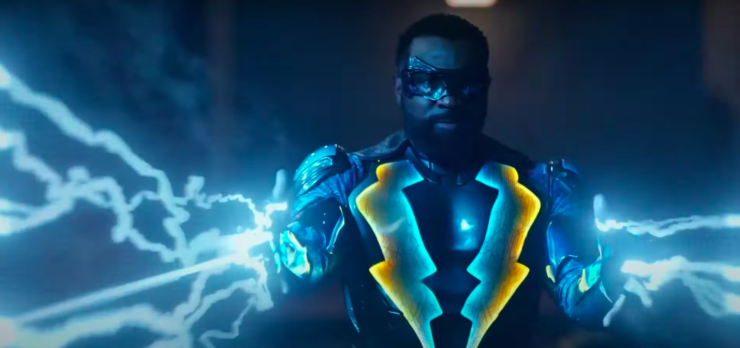Black Lightning has never been afraid to tackle current issues. For three seasons, the show has consistently carved out time in its story about a Black superhero coming out of retirement to shed a light on tensions and struggles that may affect the viewer in a very real way. Although I recognized that the show has been doing an exceptional job of examining society as it is, I never expected it would predict what the world would become.
But that’s what happened in season 3. The audience saw characters tackling problems and challenges that would affect the real world only a few months after episodes aired. And while the show’s startlingly accurate predictions are impressive, the writers also gave us suggestions about how to confront these issues. Their prescriptive solutions ensure that Black Lightning season 3 does more than paint a grim portrait of where we are today—it shines a light on the path we can take to move forward.
[Spoilers for Black Lightning seasons 1 through 3 below]
If you haven’t been following Black Lightning, here’s a quick recap of where the story is at the beginning of season 3: A group of children living in the predominantly Black city of Freeland were offered a medical vaccine from a government agency called the A.S.A.—but the shady agents actually gave the kids an experimental vaccine, intended to keep the population docile. While the dose proved fatal to some, it gave a portion of the surviving children superhuman abilities. Shortly after these enhanced kids escaped into Freeland years later, the A.S.A. quarantined the city.
This premise already incorporated clear parallels to the real-life Tuskegee experiments where Black people were experimented on without their knowledge. But the story line also directly leads to the first eerily prescient plot point of season 3—a viral outbreak.
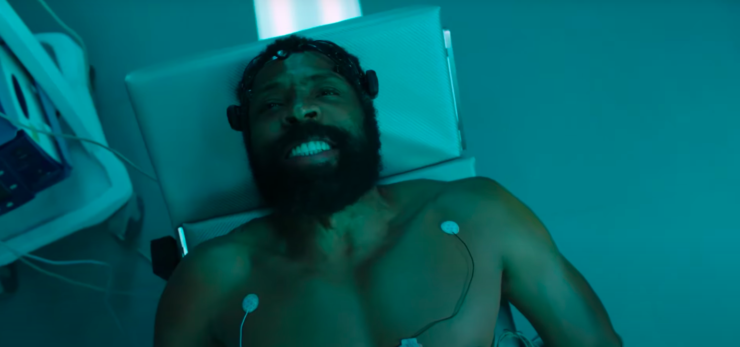
During the quarantine, the A.S.A. decides to place any suspected metahumans in a makeshift camp. The conditions there go from bad to worse when a virus breaks out within the camp’s walls. Although the staff brings in protective equipment to slow the spread, the vulnerable metahumans continue to catch the disease and die. The A.S.A. quickly elects to redirect resources into finding a way to stop the virus from spreading further.
Although this storyline began airing in October 2019, the number of parallels it has to the 2020 coronavirus outbreak is remarkable, in retrospect. There was a rapidly spreading virus tearing through society; masks and PPE became vital to keeping healthy people safe. A government organization scrambled to come up with an effective response. But the show’s most striking parallel lies in who bears the brunt of the virus’ negative effects—who hurts the most.
Buy the Book
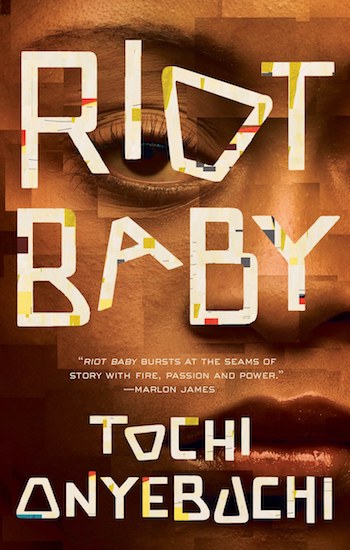

Riot Baby
In both the show and in real life, vulnerable groups with pre-existing conditions, including the poor and people of color, are the ones most affected by a new virus. Victims of social and economic inequality as well as the virus, they are the ones who have to suffer the most as the government struggles to figure out what the next move is.
The show’s approach to this situation is one that we’re all familiar with. As the vulnerable people remain isolated from society, heroic Dr. Lynn Stewart works around the clock until she creates a possible vaccine. After an older patient successfully survives the treatment, Dr. Stewart begins to distribute it to the rest of the population.
While we don’t have a coronavirus vaccine yet, the show reminds viewers of what needs to be done to get through a viral crisis. We must protect ourselves, and more importantly, the most vulnerable people around us by putting on masks and PPE while the real-life Lynn Stewarts of the world work to make sure no one falls victim to the virus again.
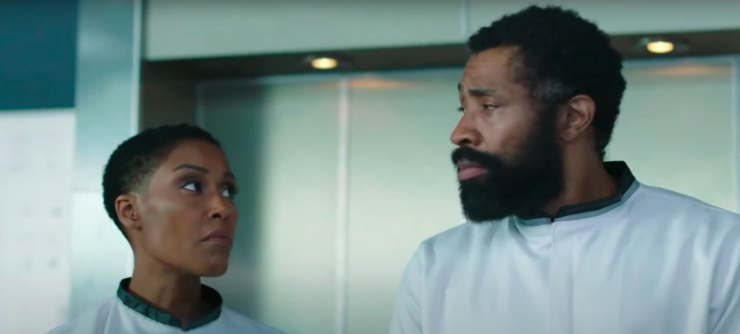
As the affected metahumans began to recover, the show pivoted its focus to another now-familiar issue taking place beyond the patients’ walls. The A.S.A.’s quarantine had made it difficult for essential items to get into Freeland. Both street gangs and businessmen took advantage of the strained supply chains by overcharging citizens for basic items. As opportunists hoarded supplies, the Perdi (a group of people living in the woods outside of the city) struggle to help the less fortunate. But their help and generosity isn’t enough to ease the concerns of everyone in Freeland.
As America headed towards quarantine in the spring of 2020, opportunistic people rapidly hoarded essential items in the hopes of making a big profit through price-gouging. Back in March, for, example, a Tennessee man named Matt Colvin bought as many bottles of hand sanitizers and antibacterial wipes as he could in hopes of selling the items for ridiculously inflated prices to desperate people. While some concerned themselves with profit, other people worried about reports of empty shelves. Meanwhile, food banks were hit hard, struggling mightily to keep up with the rising demand. In those early days, it seemed like there wouldn’t be enough to go around.
Fortunately, both the show and society pushed past this first wave of shortages, thanks in part to a swell of human decency. The Perdi in Black Lightning continued to do what they could to supply people with essential goods. In the real world, countless community groups (like this one in Iowa) stepped up to donate and to provide supplies to people who desperately needed them. On the show, a gangster named LaLa lashed out at opportunists trying to sell marked-up goods in Freeland, while in real life the legal system successfully worked to prevent people from profiting from the coronavirus crisis—people like Matt Colvin were forced to donate the materials they hoarded after they were legally barred from selling them on platforms like Amazon and eBay.
As the real and fictional legal systems tried to stop those who were willing to take advantage of the less fortunate, it’s important to note that ordinary people also came forward to do their part. They stood by their neighbors, pooled their resources, and shared what they had. Both Black Lightning and our current reality demonstrate that as long as there are some people willing to help or donate, there’s a chance everyone can make it through. Unfortunately, disease and supply shortages weren’t the only major issues the show needed to address.
Throughout Season 3, A.S.A. soldiers constantly abused the power of their position. They instituted mandatory curfews for the citizens, grabbed people off the streets without cause, and threatened to use force against civilians. One of the A.S.A.’s most despicable acts took place in front of a high school.
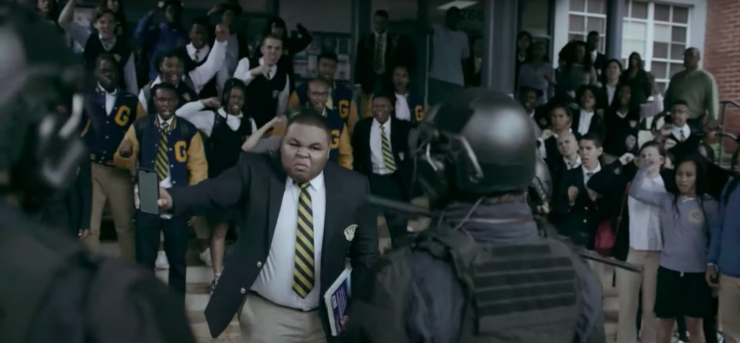
The students lead a protest against the A.S.A. after one of their agents killed their classmate Tavon. After the A.S.A. responds violently, striking a student with the butt of a rifle, Jefferson (A.K.A. Black Lightning) steps in to protect the kids. But he chooses not to reveal his powers in standing against agents. The A.S.A. then proceeds to beat the unarmed Jefferson until he can barely move.
This heartbreaking scene looks all too familiar to audiences in 2020. The stories of unarmed Black people being assaulted by police, while finally receiving some media attention, have been met with silence for far too long. People like George Floyd, Breonna Taylor, and Elijah McClain have had their lives cut short after a fatal encounter with officers. Their deaths have sparked one of the largest protests in American history.
But even as people spoke out against police violence, we’ve witnessed examples of officers assaulting innocent people and protesters. In 2020, it seemed there was no end to this constant brutality.
The A.S.A.’s cycle of violence was broken at the end of season 3. Jefferson and his allies spent weeks trying to gather crucial evidence that proved that the organization had abused their power. After taking the information to a Gotham court, judges voted to abolish the A.S.A. and prosecute its ruthless leader, Odell. The legal system’s intervention was enough to stop the A.S.A. from hurting anyone else.
This solution feels the most elusive in real life. Not a single officer was held responsible for Breonna Taylor or Elijah McClain’s deaths. And calls to abolish the police and rebuild the system with sensible reforms have been met with backlash and hate. It’s enough to make audiences feel like any hope of getting justice for victims of police violence is as fictional as Black Lightning himself.
But Jefferson and his family didn’t succeed in taking the A.S.A. down overnight. They faced many setbacks and losses on their journey to justice. For them, the road to victory was as long and seemingly impossible as the one we currently face. But they endured every hardship, and fought until justice was done. In the end, they reaped the reward of seeing the A.S.A. finally dismantled.
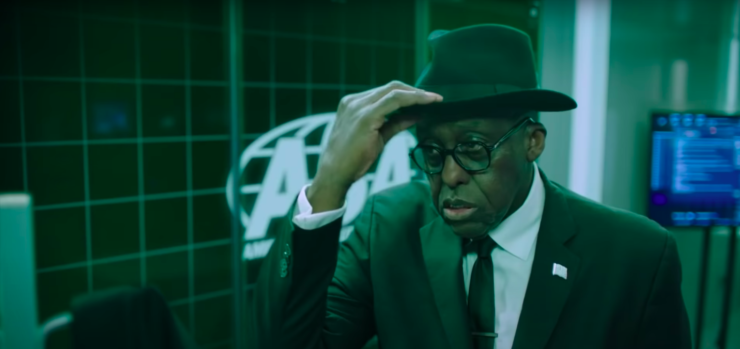
Black Lightning season 3’s triumphant ending was a perfect cap to a series of dark and turbulent events. The citizens of Freeland spent the season enduring dangerous viruses, severe shortages, and abuse at the hands of those that were sent to protect them. But in the end, they were able to overcome all of these challenges by pushing forward, supporting and standing beside each other.
It’s safe to say that everyone on the planet has been through a lot in 2020; and who knows what the remaining months will bring… But if Black Lightning’s predictive abilities hold true (and they’ve been pretty accurate so far), we’re all going to get through this. Because on this hard-hitting and timely show, the greatest superpower isn’t the ability to shoot lightning—
It’s perseverance.
Andrew Tejada is an NYC native so there’s a 90 percent chance this was written on the subway. When he’s not writing or consuming movies/tv, he’s pitching his Static Shock screenplay to anyone who’ll listen. More of Andrew’s projects and words can be found on Facebook at “Arete Writes Things.”










